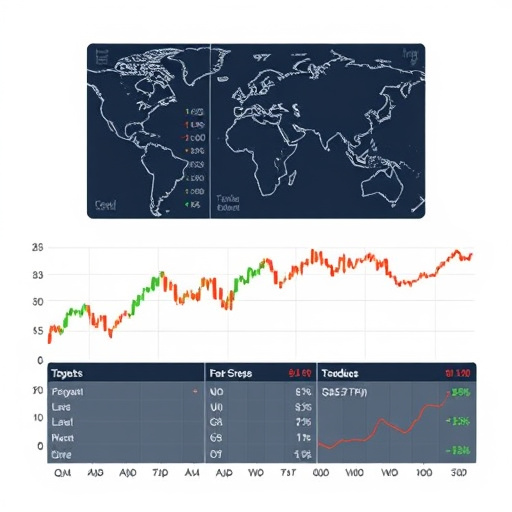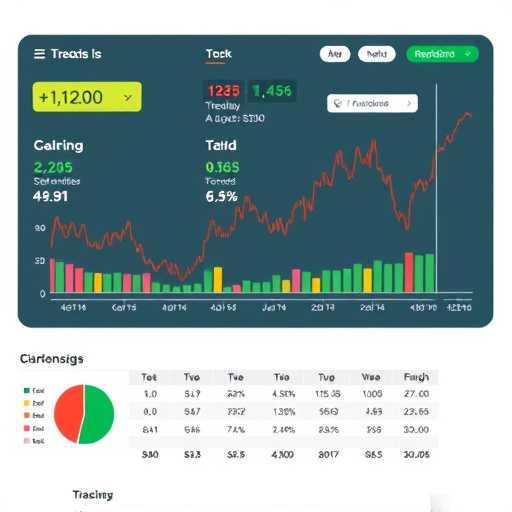In the dynamic world of stock trading, understanding and managing risk is vital for learning to trade stocks. By analyzing volatility, historical data, and trends, traders assess risk profiles and make informed decisions. Carlton trading courses teach essential skills like technical & fundamental analysis, diversification, stop-loss orders, and risk-reward ratios. Mastering these enables traders to mitigate losses, adapt to market changes, and build a resilient strategy for consistent performance in the learn to trade stocks journey.
Looking to master risk management in stock trading? Carlton’s comprehensive courses equip you with essential skills. This guide delves into crucial aspects of navigating financial markets, from understanding risk exposure in stock trading to implementing effective risk mitigation strategies. Discover Carlton’s unique approach, explore powerful tools for assessing market risks, and learn how to build a resilient trading plan that protects your capital while maximizing opportunities. Unlock your potential as a confident learn to trade stocks expert with Carlton’s expert guidance.
- Understanding Risk in Stock Trading
- Carlton's Approach to Risk Management
- Tools for Assessing Market Risks
- Strategies to Mitigate Potential Losses
- Building a Resilient Trading Plan
Understanding Risk in Stock Trading

In the dynamic world of stock trading, understanding risk is paramount for learn to trade stocks enthusiasts. Risk management isn’t about avoiding every potential loss; instead, it’s about making informed decisions that balance the possibility of gains against the likelihood of setbacks. By gauging volatility, historical performance, and market trends, traders can assess a stock’s risk profile before investing. This involves setting clear stop-loss orders to limit downside risk and taking calculated risks on promising positions.
Effective risk management in learn to trade stocks courses equips beginners with tools to navigate the market’s inherent uncertainty. It encourages a disciplined approach that considers not just potential rewards but also the consequences of adverse price movements. Through comprehensive risk analysis, traders can make more strategic choices, increasing their chances of success while maintaining a level of financial security in the volatile stock market.
Carlton's Approach to Risk Management

Carlton trading courses offer a comprehensive approach to learning how to trade stocks, with a strong emphasis on risk management. They understand that successful trading isn’t just about making predictions or choosing the right stocks; it’s about managing risks effectively. Their methodology involves teaching students not only to identify potential risks but also to quantify and mitigate them from the outset.
By focusing on risk management, Carlton equips its students with a crucial skill set for navigating the unpredictable nature of financial markets. They emphasize setting clear stop-loss orders, diversifying portfolios, and understanding historical risk patterns to make informed decisions. This proactive approach ensures that traders can protect their capital while seeking profitable opportunities, making it an invaluable asset for anyone looking to learn to trade stocks successfully.
Tools for Assessing Market Risks

In the dynamic world of stock trading, understanding market risks is paramount for any aspiring trader. Carlton trading courses equip students with powerful tools for assessing these risks, a crucial step in learning to trade stocks effectively. One such tool is technical analysis, which involves studying historical price patterns and trading volumes to predict future trends. This method helps traders identify potential risks by recognizing recurring motifs that could impact stock prices.
Additionally, fundamental analysis plays a pivotal role in risk management. By examining a company’s financial health, market position, and industry trends, traders can make informed decisions about the stability and potential risks associated with a particular stock. Integrating these analytical techniques empowers learners to navigate the markets with confidence, enhancing their ability to mitigate risks and capitalize on opportunities in the learn to trade stocks journey.
Strategies to Mitigate Potential Losses

When learning to trade stocks, understanding risk management is paramount. Strategies to mitigate potential losses should be a core focus in any Carlton trading course. Diversification is a powerful tool; spreading investments across various assets can reduce the impact of any single loss. Setting stop-loss orders is another effective method, automatically selling stocks when they reach a certain price, limiting downside risk. Risk-reward ratios are also crucial; ensuring that potential gains outweigh potential losses before entering a trade.
Furthermore, staying informed and adaptable is essential. Regularly reviewing market trends, economic indicators, and news can help anticipate changes. Adjusting trading strategies based on this information minimizes exposure to unexpected events. Combining these approaches creates a robust risk management framework, enabling traders to navigate the markets with confidence and learn to trade stocks effectively.
Building a Resilient Trading Plan
Building a resilient trading plan is a cornerstone of successful career in learning to trade stocks. It involves creating a structured strategy that accounts for potential risks and rewards, enabling traders to navigate market volatility with confidence. A robust plan starts with defining clear objectives, identifying risk tolerance levels, and selecting appropriate trading instruments aligned with individual goals. Diversification plays a crucial role in mitigating risk; spreading investments across various sectors or asset classes can help minimize the impact of any single loss.
Additionally, establishing stop-loss orders is essential for risk management. These orders automatically sell an asset when it reaches a certain price, protecting investors from significant downturns. Regular review and adjustments to the trading plan are equally important as market conditions evolve. By staying committed to their strategy while being open to adaptations, traders can build resilience that fosters consistent performance in the dynamic world of learning to trade stocks.
Learning to trade stocks involves understanding and managing risk effectively. Carlton trading courses equip you with the knowledge and tools needed to navigate the markets with confidence. By delving into risk assessment, understanding Carlton’s unique approach, exploring available resources, and adopting strategies to mitigate losses, you’re well on your way to building a resilient trading plan. These steps are crucial for navigating the dynamic stock market and achieving success in your learn to trade stocks journey.



